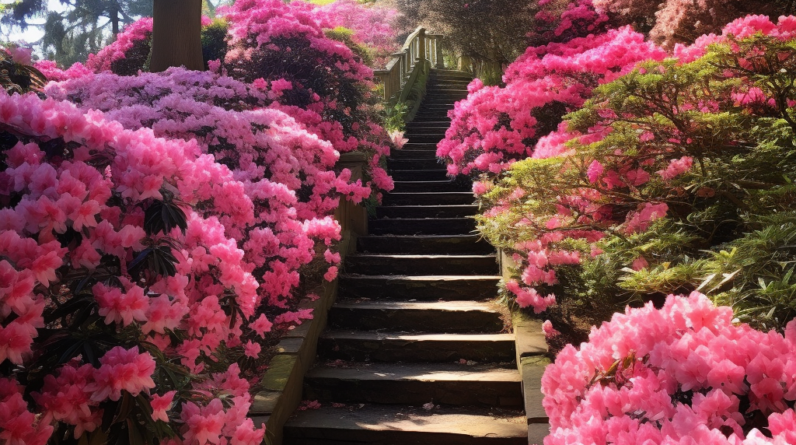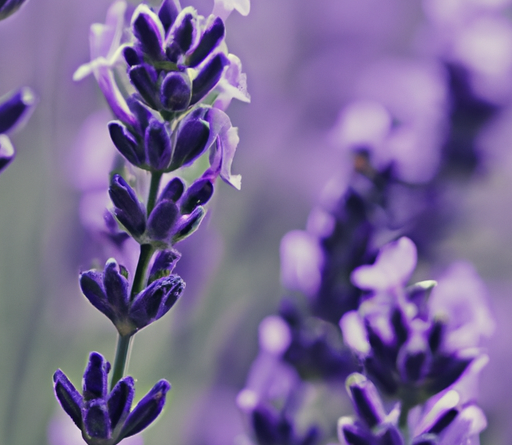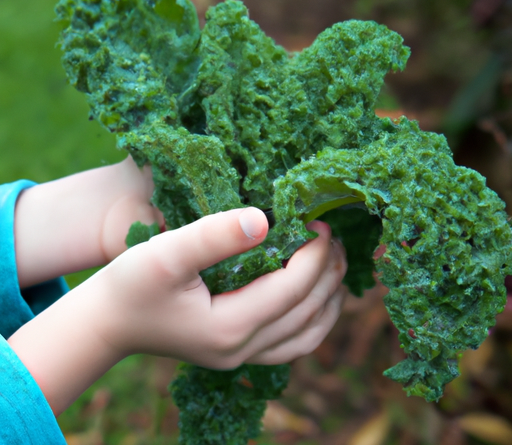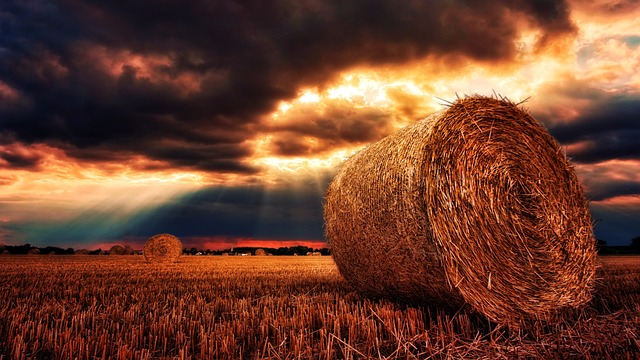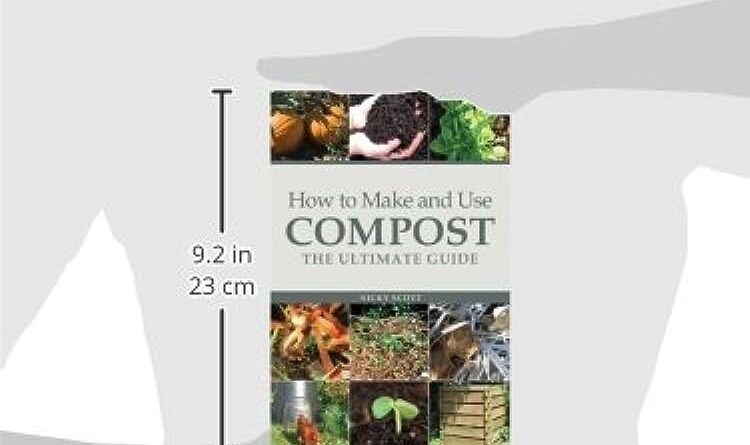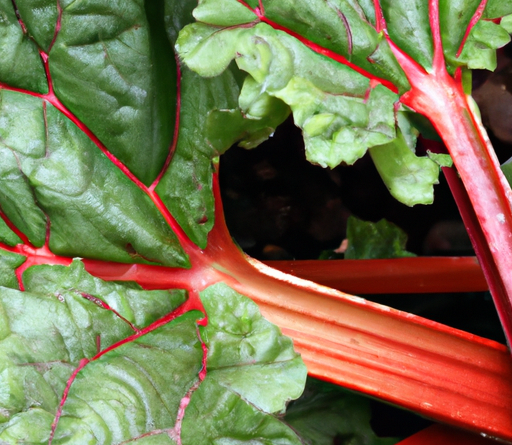
Have you ever wondered when the best time to harvest rhubarb is? It’s a question that many gardeners have, especially if they’re new to growing this delicious and versatile plant. Well, you’re in luck because today we’re going to dive into the topic and give you all the details you need to know.
Table of Contents
When to Harvest Rhubarb Explained
So, let’s talk about when to harvest rhubarb. Generally, rhubarb is ready to harvest in late spring to early summer, usually around May or June, depending on your climate. But how do you know when it’s time? Well, you can look for some telltale signs. The stalks should be thick and firm, with a good amount of color. If they’re thin and floppy, they’re not quite ready yet. We’ll explore this topic in more detail in our article.
In our upcoming article, we’ll also walk you through the step-by-step process of how to harvest rhubarb. From the tools you’ll need to the proper technique, we’ll cover it all. You’ll be confident in your rhubarb harvesting skills in no time. Stay tuned for more information on this tasty springtime treat!
In the meantime, if you’re eager to learn more about when and how to harvest rhubarb, check out our article on our website. We’ve got all the tips and tricks you need to successfully harvest rhubarb and enjoy it in your favorite recipes. Happy gardening!
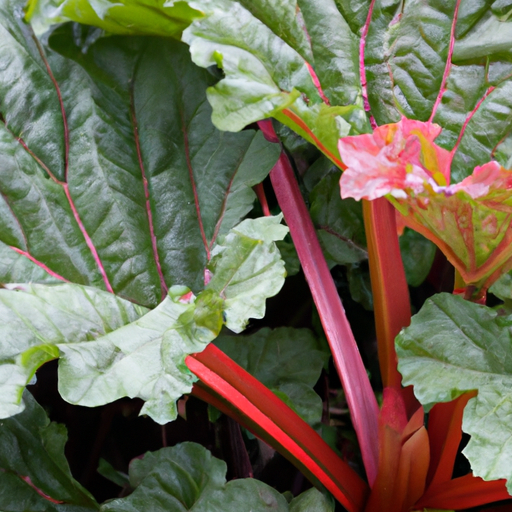
Understanding Rhubarb Harvesting
Rhubarb is a versatile and delicious plant that is often used in pies, jams, and other desserts. However, in order to enjoy the best flavor and texture, it is important to harvest rhubarb at the right time. This article will guide you through the process of determining when to harvest rhubarb, as well as provide tips on proper harvesting techniques, handling, and storage. By following these guidelines, you can ensure that you are getting the most out of your rhubarb harvest.
What is Rhubarb and its Growth Cycle
Before we delve into the details of harvesting rhubarb, let’s take a moment to understand what rhubarb is and how it grows. Rhubarb is a perennial vegetable that belongs to the buckwheat family. It is known for its long, thick stalks and large, green leaves. Rhubarb plants have a growth cycle that typically begins in early spring, with the emergence of new shoots. These shoots eventually develop into mature plants with thick and juicy stalks.
Importance of Proper Harvesting
Harvesting rhubarb at the right time is crucial for several reasons. First and foremost, harvesting at the optimal time ensures that you get the best flavor and texture from the stalks. If rhubarb is harvested too early, the stalks may be too sour and tough. On the other hand, if harvesting is delayed, the stalks can become woody and fibrous, making them less desirable for consumption.
Proper harvesting also promotes the overall health of the rhubarb plant. By removing only the mature stalks, you allow the plant to continue growing and producing new shoots. This ensures a sustainable harvest year after year.
Factors to Consider Before Harvesting
There are several factors to consider before you start harvesting your rhubarb. These include the age of the plant, the overall growth stage, and the weather conditions.
First, it is important to note that rhubarb plants should not be harvested during their first year of growth. This allows the plant to establish a strong root system and ensure its longevity. For the best results, wait until the second year before you start harvesting.
Secondly, consider the overall growth stage of the plant. Rhubarb stalks are ready for harvest when they reach a certain size and thickness. We will discuss this in more detail in the next section.
Finally, pay attention to the weather conditions. Rhubarb grows best in cooler temperatures, so avoid harvesting during periods of extreme heat. High temperatures can cause the stalks to become limp and lose their crispness.
Determining the Right Time to Harvest
Now that you understand the importance of proper harvesting, let’s explore how to determine the right time to harvest rhubarb. There are a few key indicators to look out for.
Observing Rhubarb Plant’s Growth Stage
One of the first signs that your rhubarb is ready for harvest is the overall growth stage of the plant. As the plant matures, it will produce larger and thicker stalks. A good rule of thumb is to wait until the stalks are about 10-15 inches in length and have a diameter of at least 1 inch. At this stage, the stalks will be firm and crisp, ideal for culinary use.
Monitoring Stem Size and Thickness
In addition to observing the growth stage, it is also important to monitor the size and thickness of the rhubarb stalks. This can be done by gently bending the stalk and feeling its thickness. If the stalk feels thin and easily snaps, it is not yet ready for harvest. On the other hand, if the stalk feels thick and is difficult to snap, it is a good indication that it is mature and ready to be harvested.
Checking Leaf Development
While the focus is often on the stalks, it is also helpful to consider the development of the leaves. Healthy rhubarb plants will have large, vibrant leaves that are fully developed. The leaves should be green and free from any signs of disease or damage. If you notice any yellowing or wilting of the leaves, it may be a sign that the plant is under stress and harvesting should be delayed until the plant has recovered.
Harvesting Techniques for Rhubarb
Now that you know how to determine when your rhubarb is ready for harvest, let’s move on to the actual harvesting techniques. Here is what you will need and step-by-step guide to help you through the process.
Tools Required for Harvesting
To harvest rhubarb, you will need a few basic tools. These include a sharp knife or garden shears, a pair of gardening gloves, and a small bucket or container to collect the harvested stalks. It is important to use a sharp knife or shears to ensure clean cuts and minimize damage to the plant.
Step-by-Step Guide for Stalk Harvesting
- Begin by putting on your gardening gloves to protect your hands from the sharp leaves and stalks.
- Locate a mature rhubarb stalk that is ready for harvest.
- Position your knife or shears near the base of the stalk, where it meets the soil.
- Make a clean and diagonal cut, removing the entire stalk from the plant.
- Place the harvested stalk into your bucket or container.
- Repeat the process for each mature stalk, being careful not to damage the surrounding stalks or leaves.
- Once you have finished harvesting, gently remove any debris or dirt from the stalks.
Tips for Cutting Rhubarb Stalks Properly
When cutting rhubarb stalks, it is important to keep a few tips in mind to ensure the best results. First, always make a clean cut rather than tearing or pulling the stalks. This will minimize damage to the plant and promote quicker healing. Secondly, it is recommended to cut the stalks at an angle rather than straight across. This allows any excess moisture to drain away from the cut end, reducing the risk of rotting.
Best Practices for Harvesting
In addition to following proper harvesting techniques, there are a few best practices to keep in mind to maximize your rhubarb harvest.
Avoiding Overharvesting and Damaging the Plant
When harvesting rhubarb, it is important to avoid overharvesting. Overharvesting refers to the practice of removing too many stalks from the plant at once, which can weaken the plant and hinder its future growth. To prevent this, only harvest about one-third to half of the available stalks at a time. This allows the plant to continue photosynthesis and store energy for future growth.
Furthermore, be gentle when harvesting to avoid damaging the crowns and roots of the plant. Use a sharp knife or shears to make clean cuts, and avoid pulling or yanking on the stalks. This will minimize stress on the plant and enable it to recover quickly.
Removing Flower Stalks to Promote Growth
As rhubarb plants mature, they may produce flower stalks, also known as seed stalks. These stalks can divert energy away from the production of edible stalks, so it is important to remove them promptly. Flower stalks are typically tall and thin, and can be easily distinguished from the edible stalks. Simply cut them off at the base to prevent the plant from going to seed.
Cutting Rhubarb Stalks at the Right Angle
When cutting rhubarb stalks, it is best to cut them at an angle rather than straight across. This angle allows water to drain away from the cut end, reducing the risk of rotting. Additionally, cutting at an angle provides a larger exposed surface area, allowing the plant to heal more quickly after harvesting.
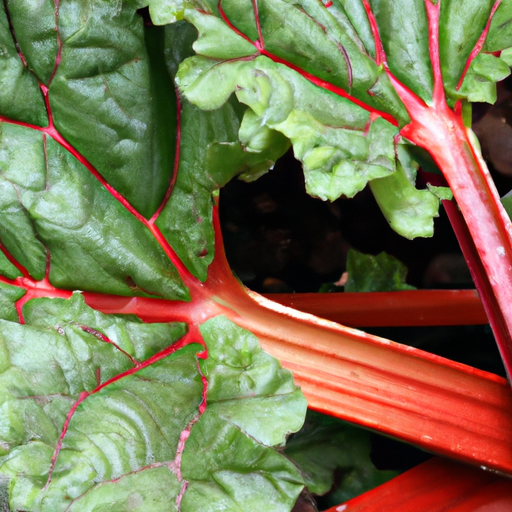
Proper Handling and Storage
Once you have successfully harvested your rhubarb, it is important to handle and store it properly to maintain its freshness and quality.
Cleaning and Washing Rhubarb Stalks
Before storing or using your harvested rhubarb, it is important to clean and wash the stalks. Begin by removing any leaves or leaf remnants from the stalks. Then, rinse the stalks under cool running water to remove any dirt or debris. Gently pat dry with a clean towel before proceeding.
Storing Rhubarb in the Refrigerator
Freshly harvested rhubarb can be stored in the refrigerator for up to a week. To do this, place the cleaned and dry stalks in a perforated plastic bag to allow for airflow. If a perforated bag is not available, you can also loosely wrap the stalks in a damp cloth or paper towel and place them in a plastic bag. The moisture will help prevent the stalks from drying out.
Freezing Techniques to Preserve Harvested Rhubarb
If you have a bountiful rhubarb harvest and would like to preserve some for later use, freezing is a great option. To freeze rhubarb, begin by cleaning and chopping the stalks into small pieces. Blanch the pieces in boiling water for 1-2 minutes, then immediately transfer them to an ice bath to stop the cooking process. Once the pieces are cool, drain them and pack them into airtight freezer bags or containers. Frozen rhubarb can be stored for up to a year and is perfect for use in pies, jams, or other cooked dishes.
Common Mistakes to Avoid
While harvesting rhubarb may seem straightforward, there are a few common mistakes that can negatively impact your harvest. Here are some mistakes to avoid:
Picking Rhubarb Too Early or Too Late
Harvesting rhubarb too early or too late can affect the flavor and texture of the stalks. If picked too early, the stalks may be sour and tough. If picked too late, the stalks can become woody and fibrous. It is crucial to wait until the stalks are mature and meet the size and thickness criteria discussed earlier.
Neglecting to Remove Inedible Parts
Before consuming or storing harvested rhubarb, it is important to remove any inedible parts. This includes removing any leaves, as they contain high levels of oxalic acid, which can be harmful if ingested in large quantities. Additionally, trim off any tough or stringy ends of the stalks before use.
Improperly Storing Harvested Rhubarb
Proper storage is key to maintaining the quality of harvested rhubarb. Avoid leaving the stalks out at room temperature for extended periods of time, as they can wilt and lose their crispness. It is also important to store rhubarb separately from fruits and vegetables that produce ethylene gas, as this can accelerate spoilage. Follow the earlier guidelines for cleaning and refrigerating or freezing rhubarb to ensure its longevity.
Signs of Overdue Rhubarb Harvesting
If you accidentally miss the optimal harvesting window for your rhubarb, there are a few signs that can indicate that the stalks are overdue for harvest.
Identifying Overgrown Stalks
Overgrown stalks are thick, fibrous, and tough to chew. They may also have a more pronounced reddish color. While these stalks can still be at least partially edible, they are generally not as desirable as younger and more tender stalks.
Noticing Woody and Fibrous Texture
Delayed harvesting can lead to the development of a woody and fibrous texture in rhubarb stalks. When you bite into a mature stalk, it should have a crisp texture and a pleasant crunch. If the stalk feels tough, stringy, or excessively chewy, it is an indication that it has been left on the plant for too long.
Effects of Delayed Harvest on Plant Growth
Harvesting rhubarb late not only affects the quality of the stalks, but it can also impact the health and growth of the plant. When stalks are left on the plant for an extended period, the plant may divert energy towards producing seeds and flowers, rather than storing energy for the next growing season. This can result in reduced vigor and overall plant health.
Utilizing Harvested Rhubarb
Now that you have successfully harvested your rhubarb, it’s time to put it to good use! Here are a few ideas on how to utilize your freshly harvested rhubarb.
Delicious Rhubarb Recipes
Rhubarb is a versatile ingredient that can be used in a wide range of recipes. From pies and crumbles to jams and sauces, the possibilities are endless. Consider making a classic rhubarb pie, a tangy rhubarb compote to top your yogurt or ice cream, or a refreshing rhubarb lemonade. Rhubarb can also be incorporated into savory dishes, such as chutneys or roasted alongside meats for a unique flavor twist.
Preserving Rhubarb for Later Use
If you have a surplus of rhubarb, preserving it is a great way to enjoy it throughout the year. As mentioned earlier, freezing rhubarb is an excellent preservation technique. You can also make rhubarb jams or compotes and store them in sterilized jars for long-term storage. Canning rhubarb is another option, allowing you to enjoy its tangy goodness even during the winter months.
Sharing Rhubarb Harvest with Others
If you find yourself with an abundance of rhubarb, consider sharing your harvest with friends, family, or neighbors. Rhubarb is a unique and often underappreciated ingredient, so sharing it can be a great way to introduce others to its deliciousness. You can also donate your excess rhubarb to local food banks or community organizations.
Health Benefits of Rhubarb
In addition to its culinary versatility, rhubarb offers numerous health benefits. Here are a few reasons why incorporating rhubarb into your diet can be beneficial.
Nutritional Value and Vitamin Content
Rhubarb is low in calories and fat, making it a healthy choice for those watching their weight. It is also a good source of vitamins and minerals, including vitamin C, vitamin K, and potassium. These essential nutrients contribute to overall health and well-being.
Potential Medicinal Uses
Rhubarb has been used in traditional medicine for centuries. It is believed to have anti-inflammatory and antioxidant properties, which can help reduce inflammation, fight free radicals, and protect against chronic diseases. However, it is important to note that more research is needed to fully understand the medicinal benefits of rhubarb.
Promoting Digestive Health
Rhubarb is commonly known for its laxative properties, making it an effective natural remedy for constipation. The fiber content in rhubarb helps regulate bowel movements and promote a healthy digestive system. Additionally, the high water content of rhubarb can help with hydration and overall gut health.
When to Harvest Rhubarb Conclusion
Harvesting rhubarb at the right time is crucial for enjoying its best flavor, texture, and nutritional benefits. By observing the growth stage, monitoring stem size and thickness, and checking leaf development, you can determine the optimal time to harvest your rhubarb. Remember to use the proper tools and techniques for harvesting, and handle and store the stalks with care to maintain their freshness and quality. Whether you choose to enjoy your rhubarb fresh, frozen, or preserved, its tangy and tart flavor is sure to delight your taste buds. So go ahead, harvest your rhubarb with confidence and enjoy the bountiful rewards of your garden.


